

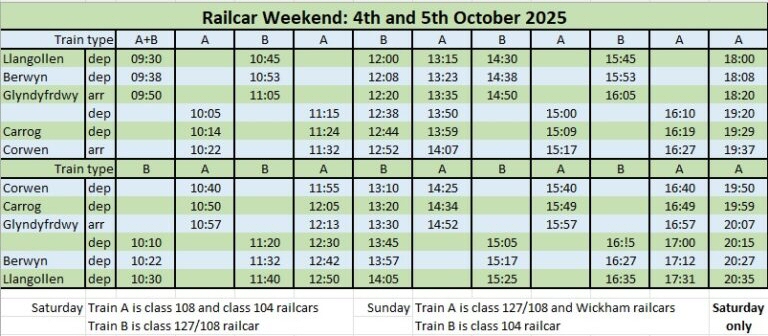
The Heritage Railcar Weekend will this year take place on Saturday 4th and Sunday 5th October in accordance with the above timetable. There is also a graphical version of the timetable for the benefit of those who find it easier to plan their moves with that than with the tabular one.
For further information please see https://llangollen-railway.co.uk/news/heritage-railcar-weekend/
When a 'shunt-a-thon' took place at our Pentrefelin Depot on 17 August, the group's photographer, Mike Martin, was able to capture some of the action...
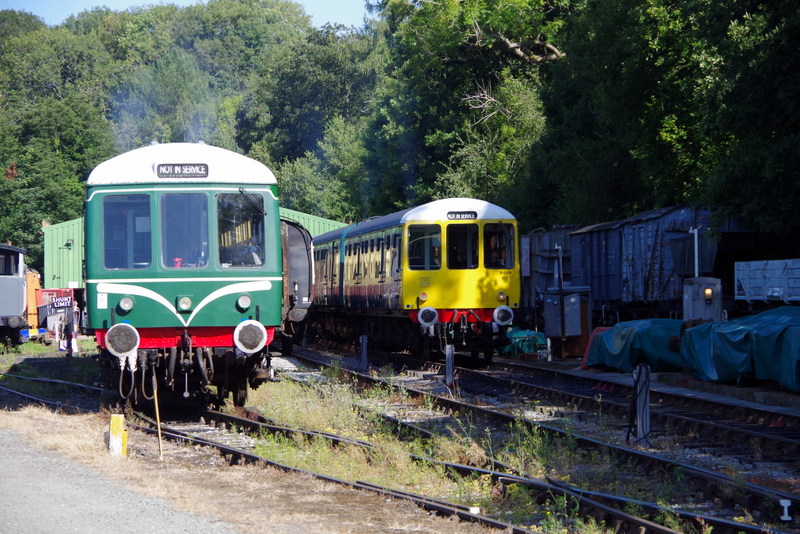
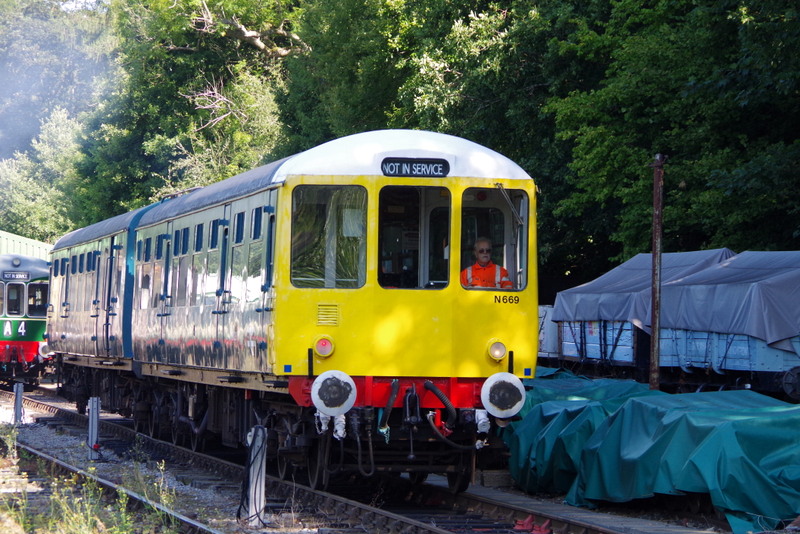
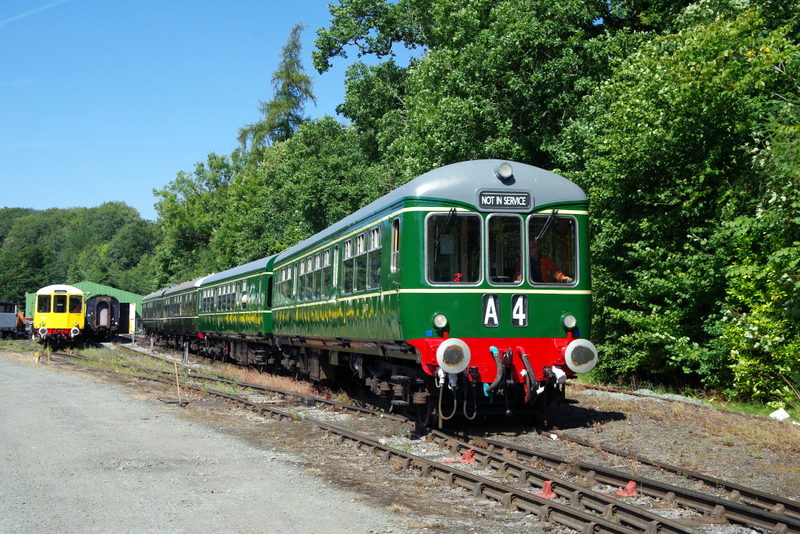
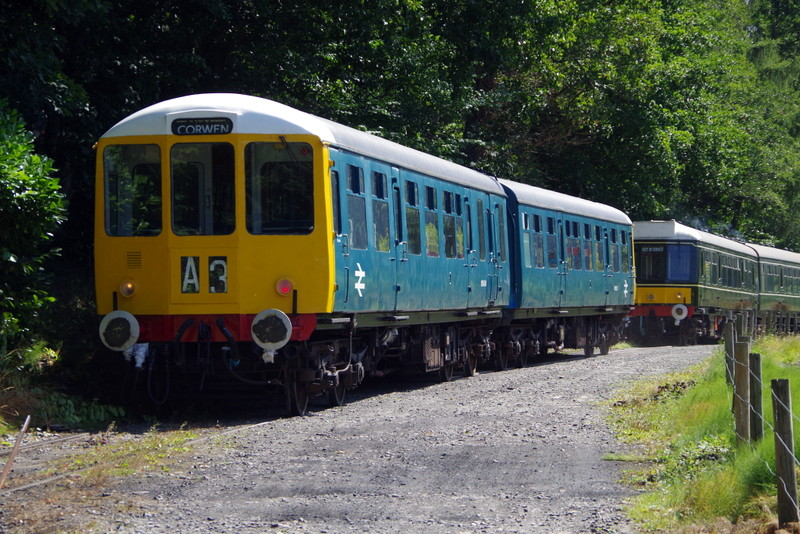
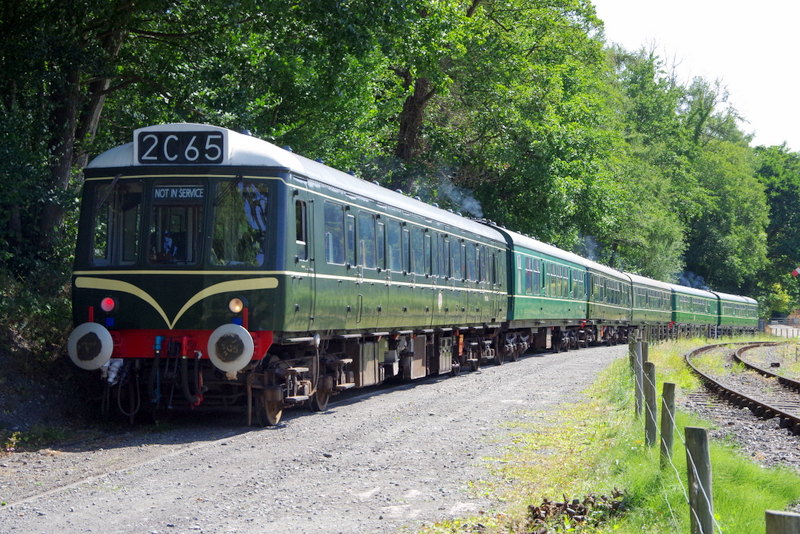
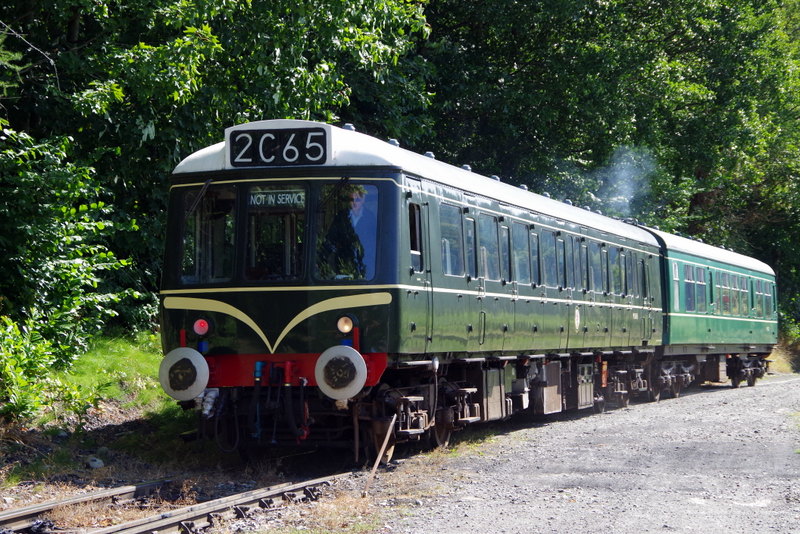
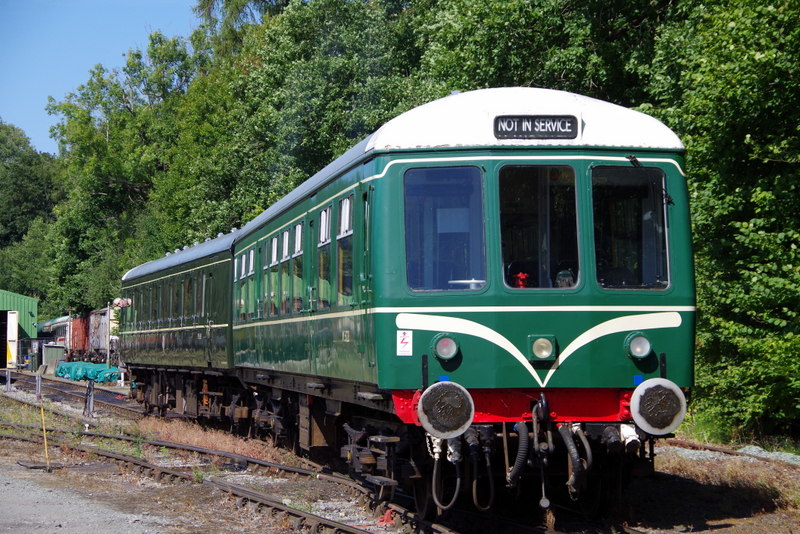
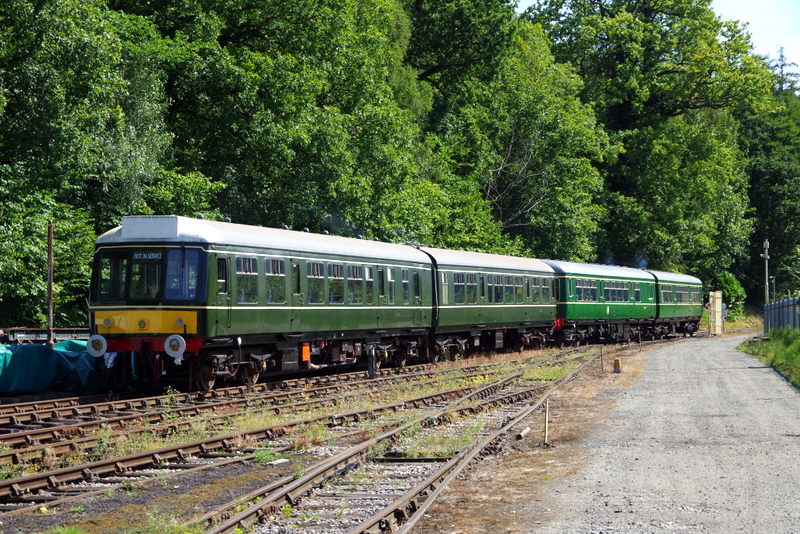
Some snippets of information about work that has taken place at Pentrefelin (Llangollen) and Butterley (Midland Railway) can be found in the 'Unit-specific work' section below.
Since the previous report we mostly fielded the hybrid class 127/108 whenever the Railway requested a 2-car unit and the Wickham class 109 + class 108 when a 4-car unit was requested. There were, however, some variations with the Wickham class 109 and the class 108 both running solo on occasions, and the pairing of classes 104 and 109 providing the service on 14th August and then venturing out again the following day as a substitute for a Diesel locomotive.
By far the most unusual occurrence was when a green 6-car unit was provided at short notice to run the second and third return trips to Corwen on 7th September following the failure of a steam locomotive. The following picture shows it at Glyndyfrdwy...
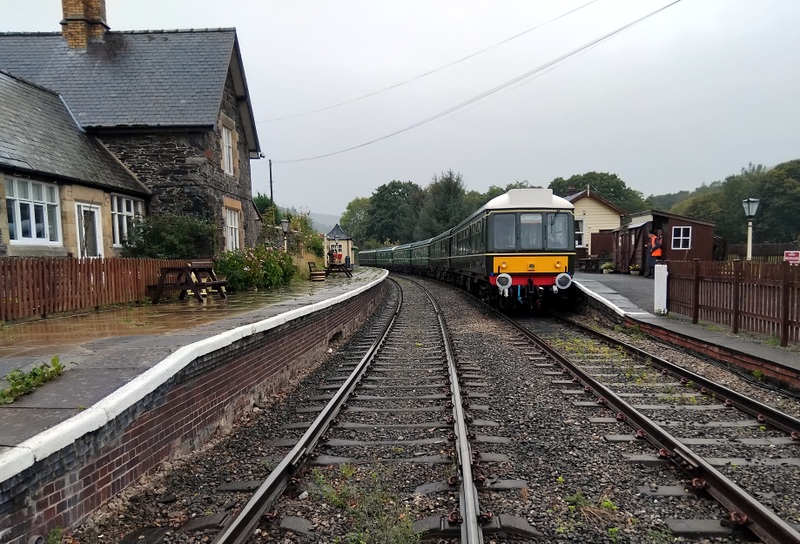
A search through the records suggests that it was the first time that a 6-car unit had been used in passenger service since July 2020, when the Railway was restarting services post-Covid, and we think that it was the first time ever that we have used an entirely-green 6-car.
On 23rd August the Wickham class 109 was able to pose with a former Crosville 1957 Bristol SC4LK bus at Corwen. Both of them were built in 1957 and are, therefore, almost seventy years old!
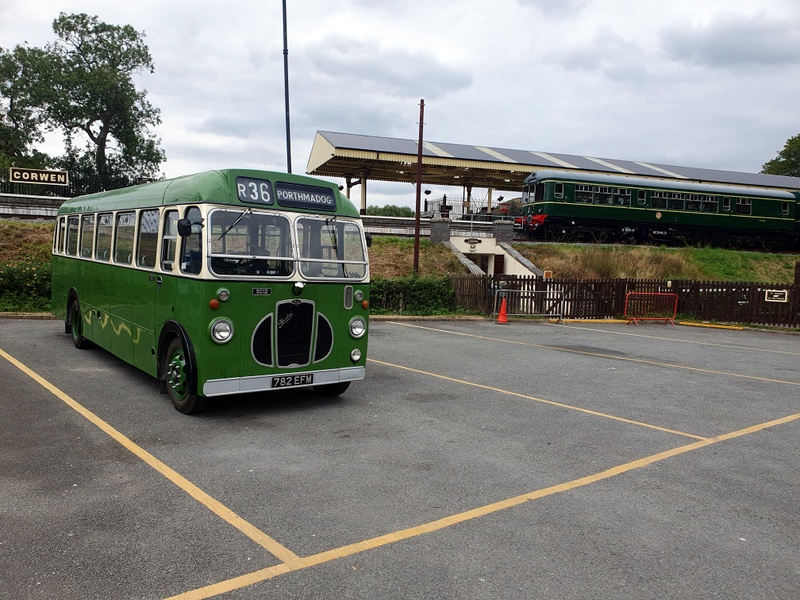
The following picture shows a driver preparing the hybrid class 127/108 for the 'B' timetable (two train) service on 30th August. Having just started the no. 2 engine of the class 127, he was carrying out the check that is known colloquially as "The three wets" which involves looking for leaks of fuel, oil and/or coolant...
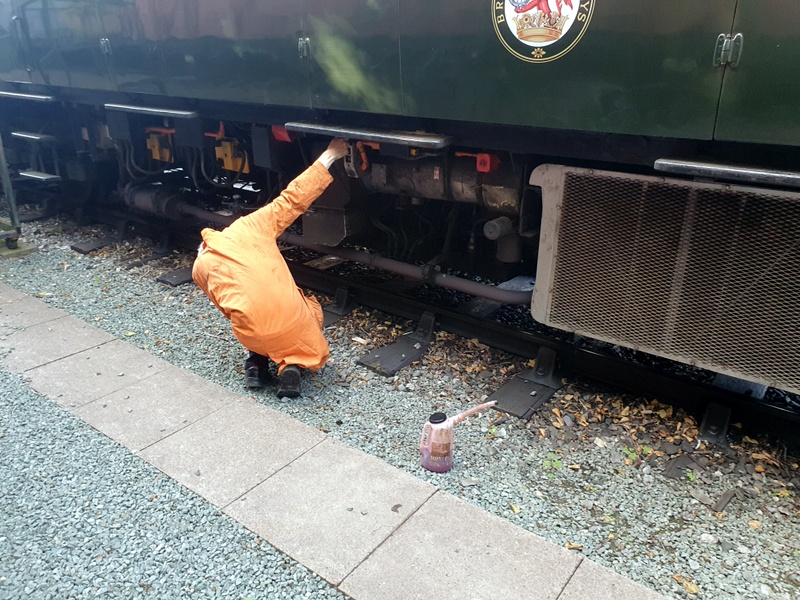
Fortunately there were no such leaks (as is usually the case) and he was soon on his way to Llangollen Station with the empty coaching stock (ECS) - a journey which provided an opportunity to stop and photograph the Pannier Tank no. 7754 departing with the 10.00 to Corwen...
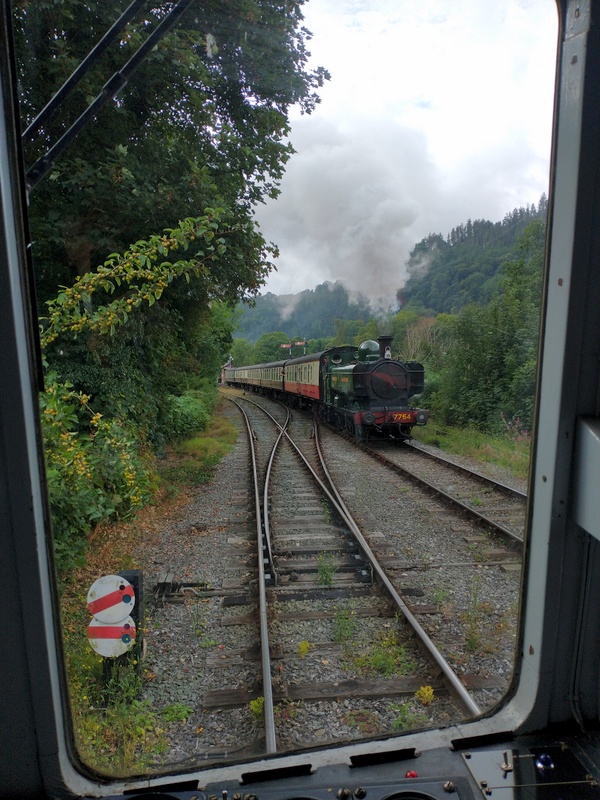
The class 127 played an important part in the Railway's 50th anniversary event on 12-14 September because it was the first railcar to arrive at the line back in 1984 and has now worked there for more than forty years. Sadly its original partner at the line - Cravens trailer no. 56456 - was unable to take part because it is still undergoing restoration so the class 127 ran with its current 'temporary' partner - Derby trailer no. 56223 - although the 'temporary' turns out to have been a fifteen-year partnership!. The following pictures show the hybrid class 127/108 combination at Corwen on the first day of the event...
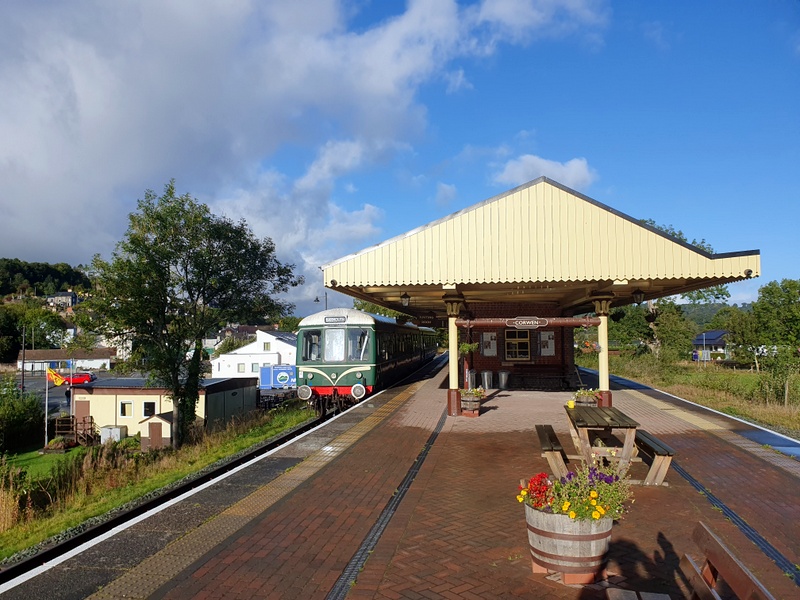
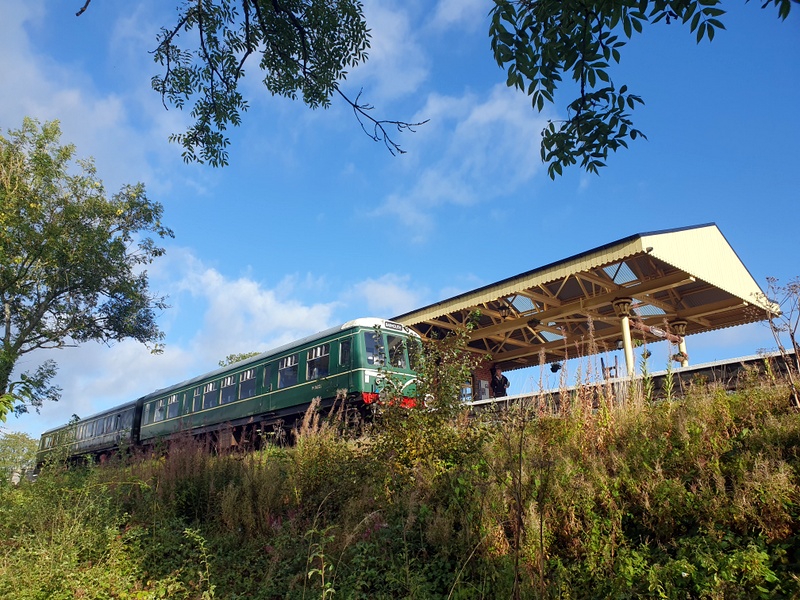
The railway line through the Dee Valley may be referred to as a branch line but this is something that gave the driver an unwelcome surprise on the approach to Carrog on 17th September...
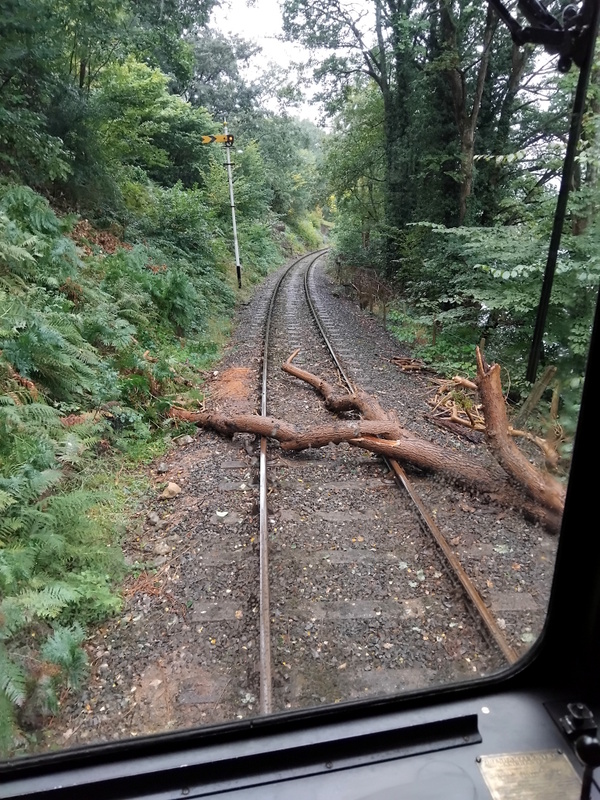
Fortunately he was able to stop the train in time and, after summoning help from staff with chainsaws, who just happened to be nearby at Carrog, he was able to proceed after a delay of only half an hour or so.
Although it was unable to attend the Railway's 50th anniversary 'ball', the Cravens trailer has received a lot of attention in recent weeks.
The following pictures show it in the shed at Pentrefelin on 14th September...
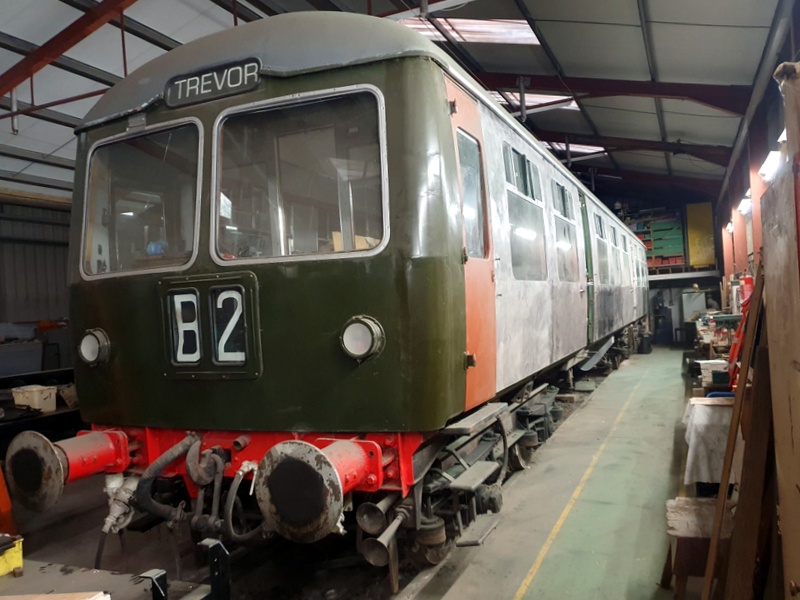
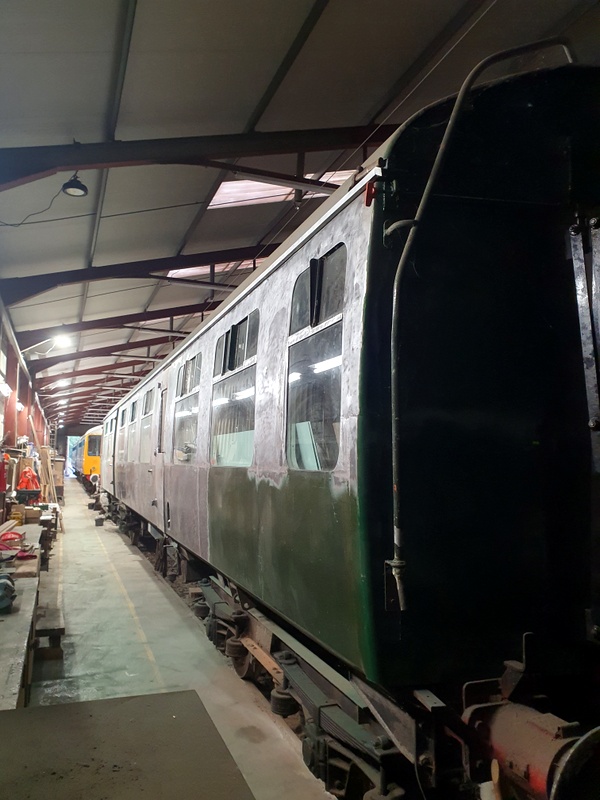
Prior to that there was a flurry of activity including 'depainting'...
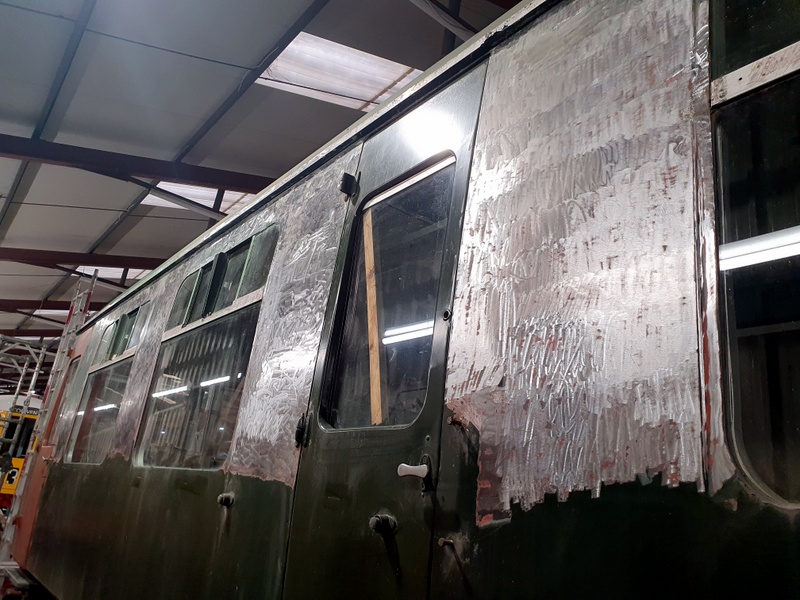
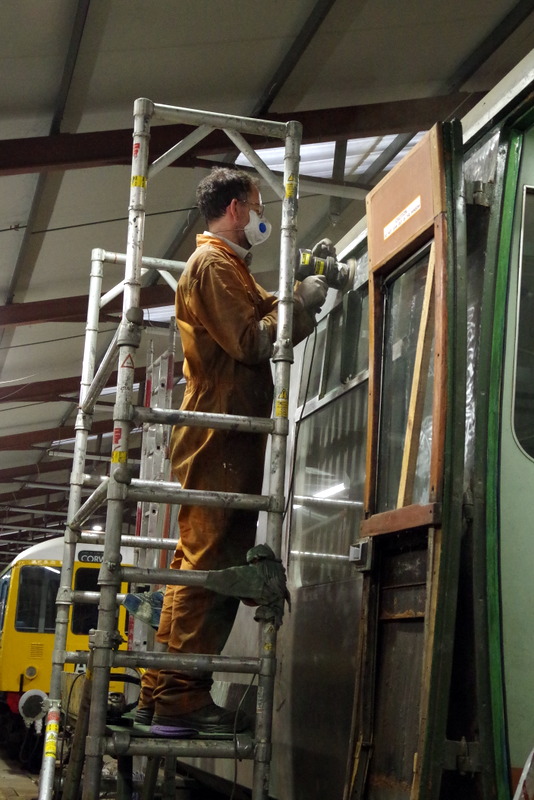
...some of which was like opening a history book by revealing previously-worn liveries...
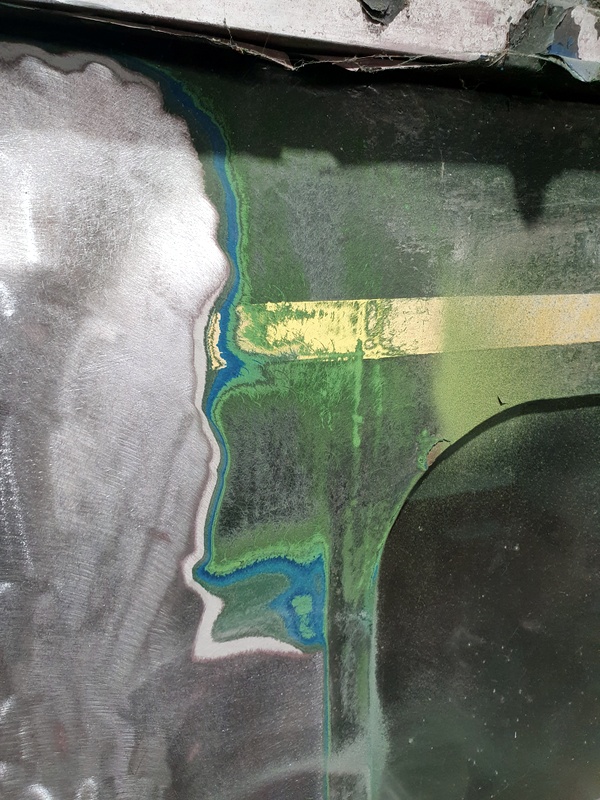
The process of dealing with the doors continued with their removal from the vehicle, dismantling, cleaning/repairing of the components, rebuilding, and reinstallation...
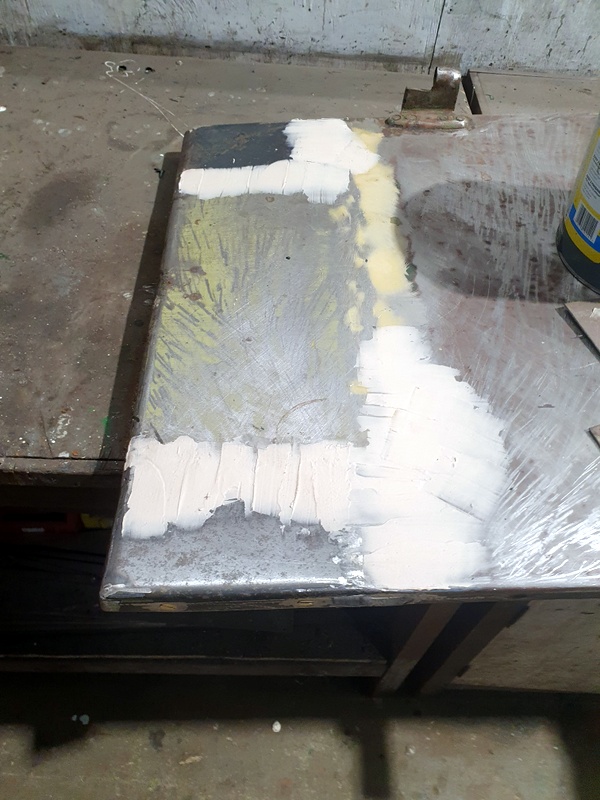
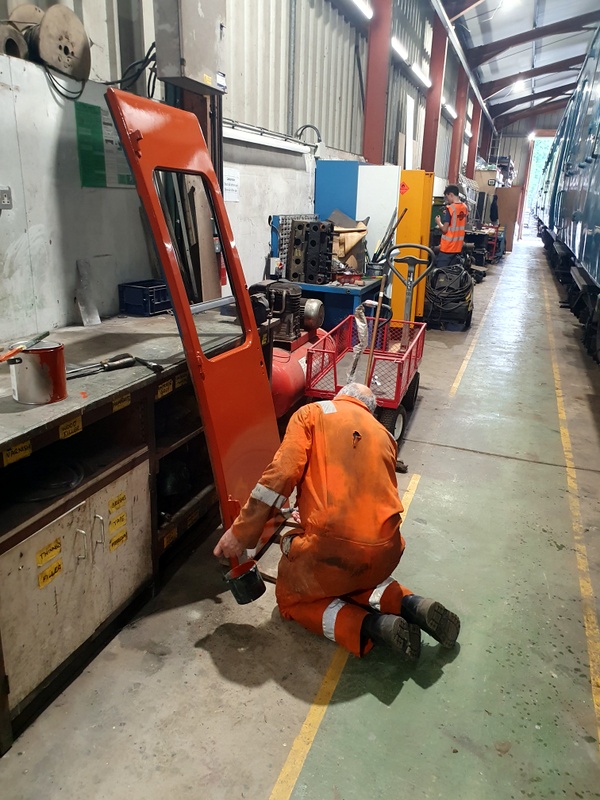
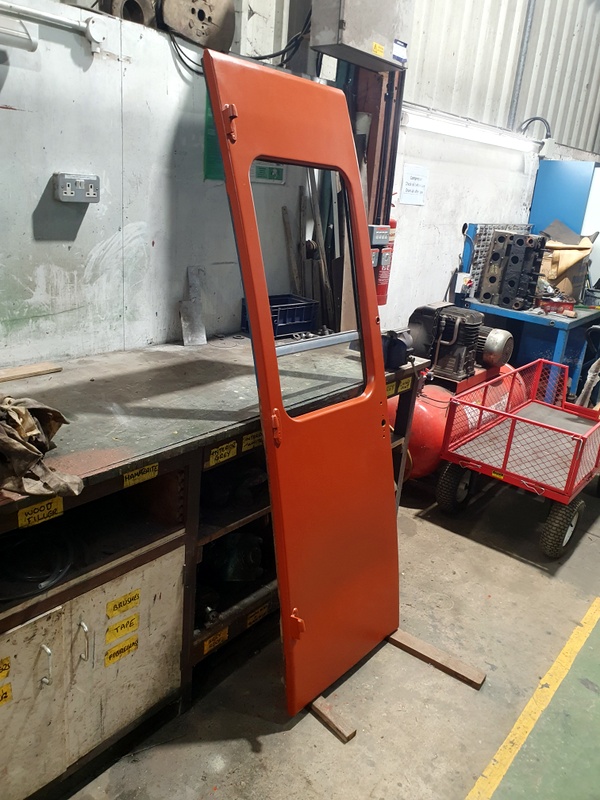
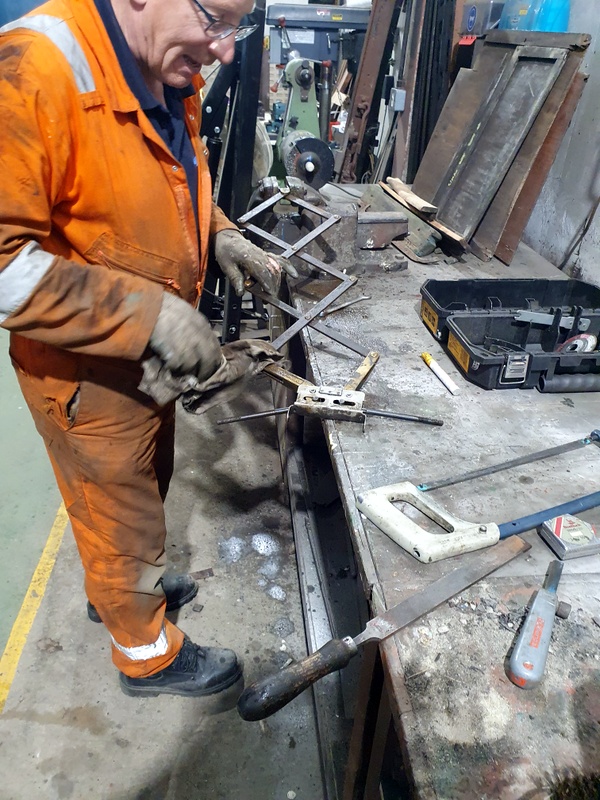
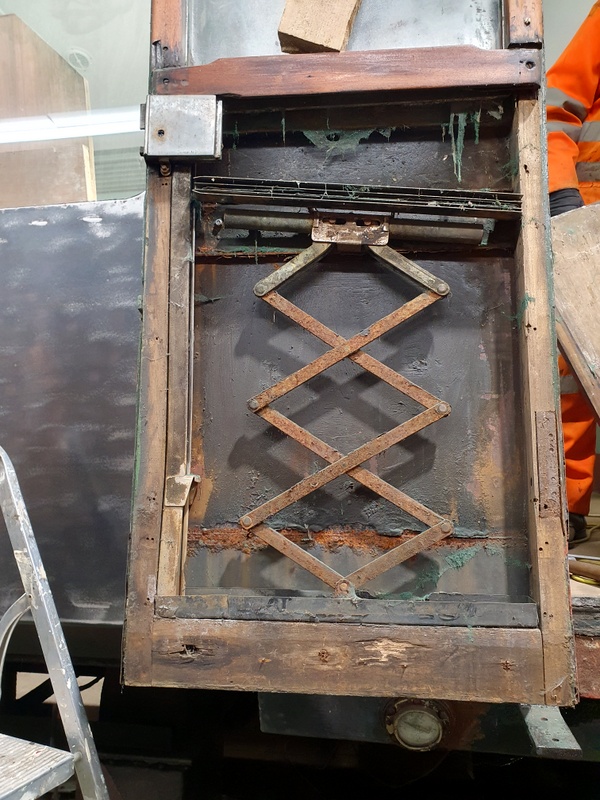
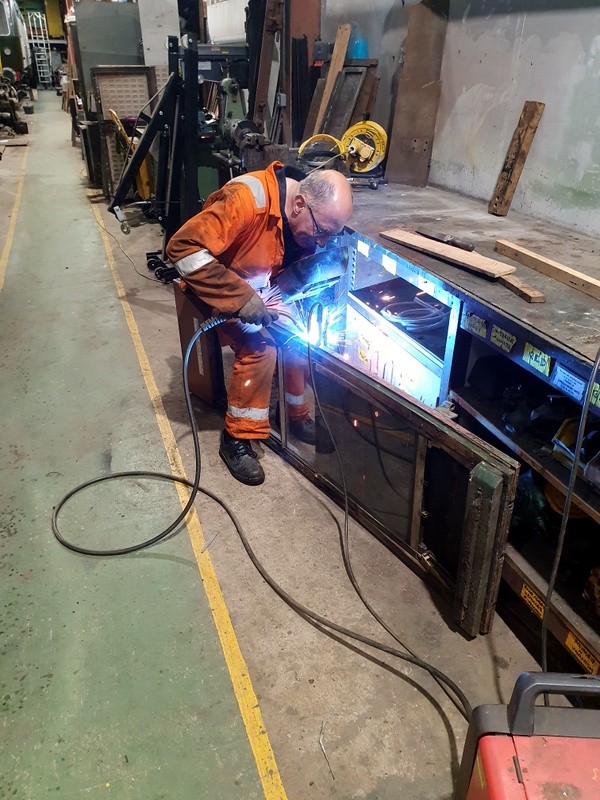
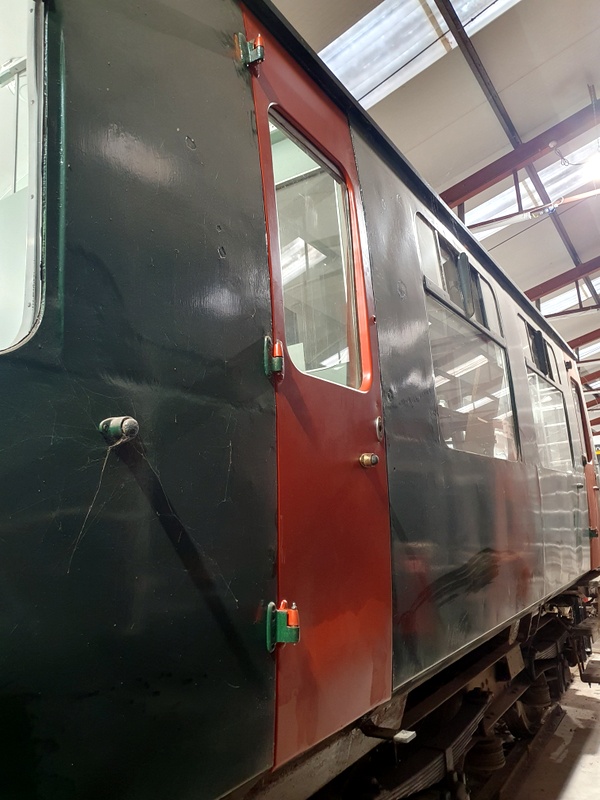
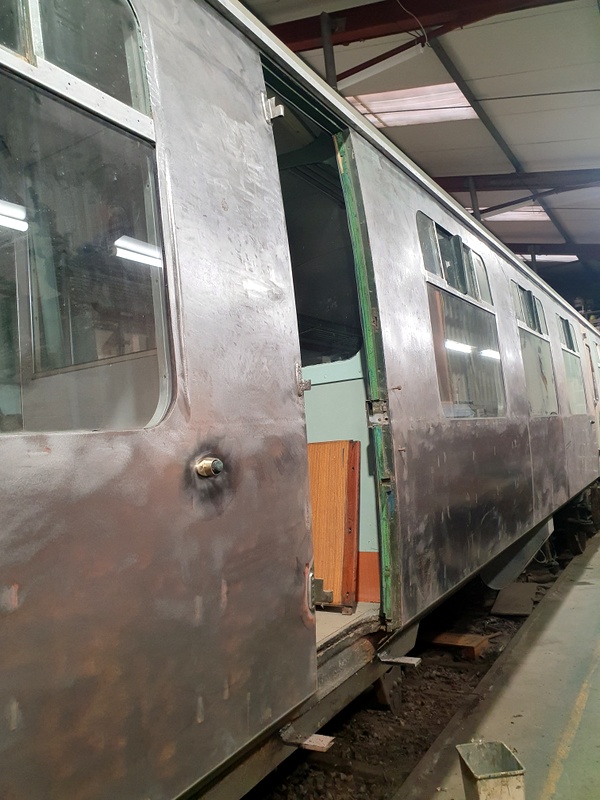
The vacuum reservoirs were removed from underneath the vehicle, cleaned up with a needlegun and painted...
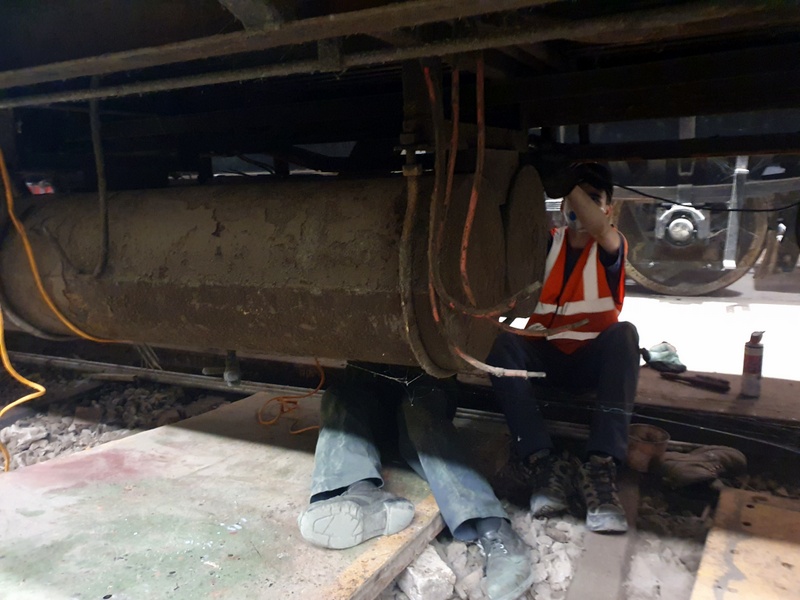
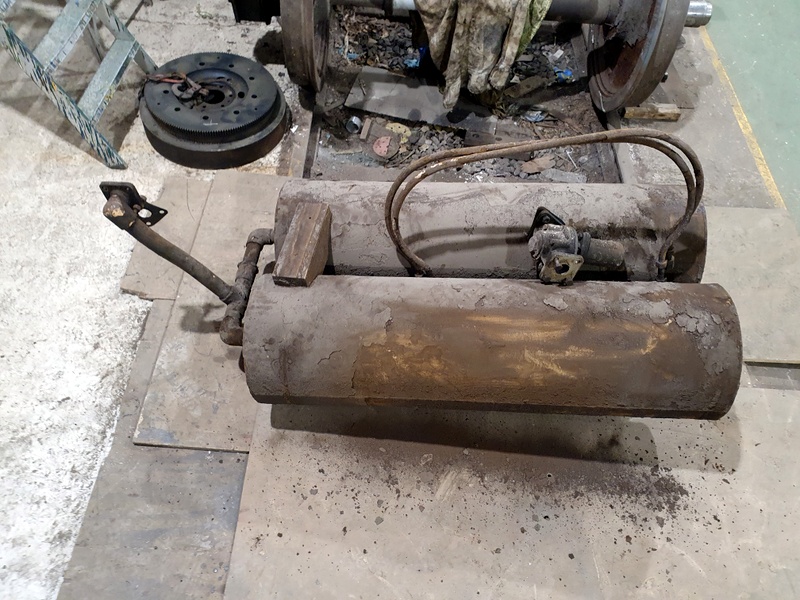
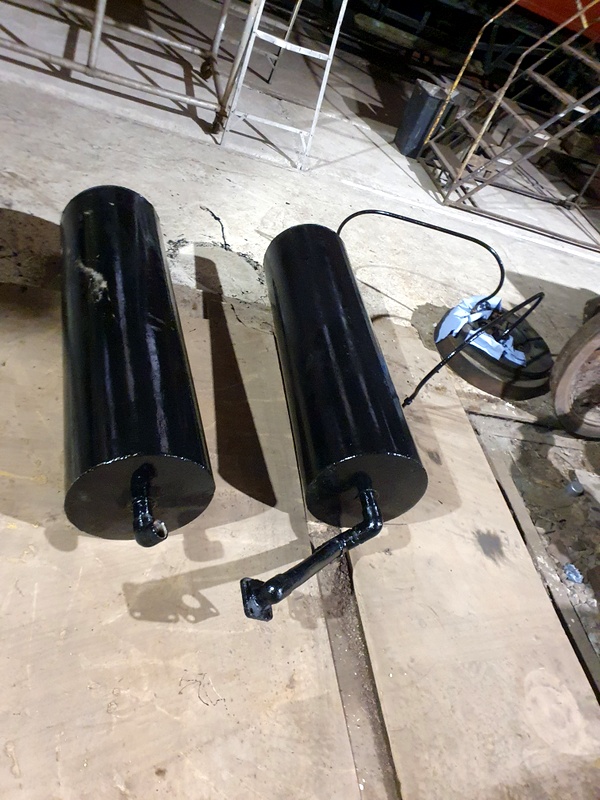
Inside the vehicle, work continued with the construction and fitting of wall panels and beading...
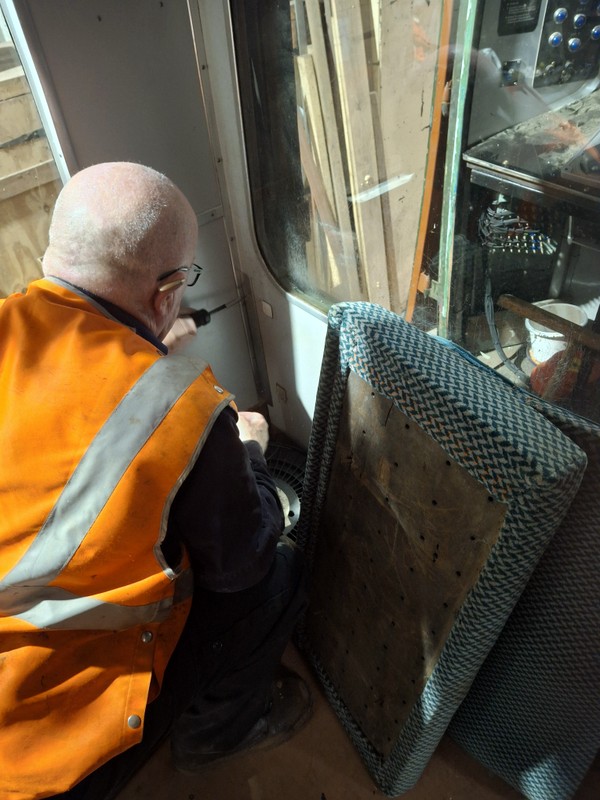
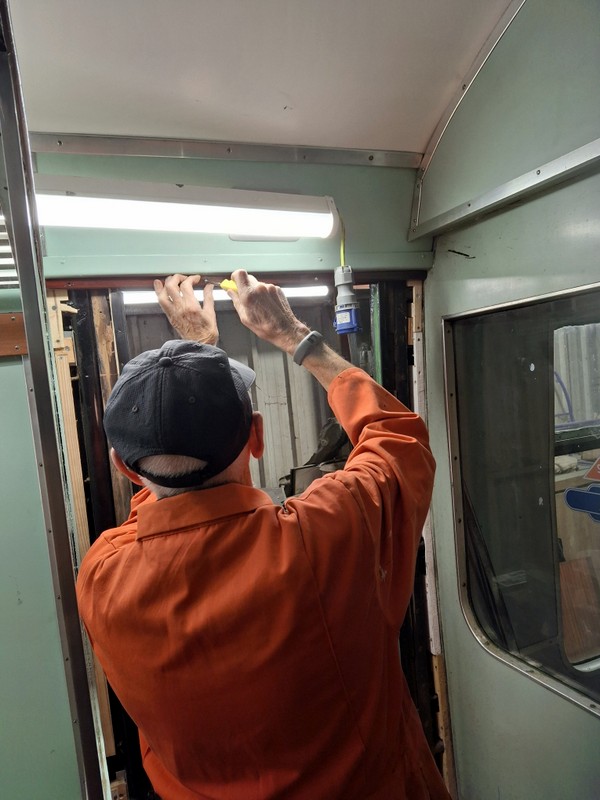
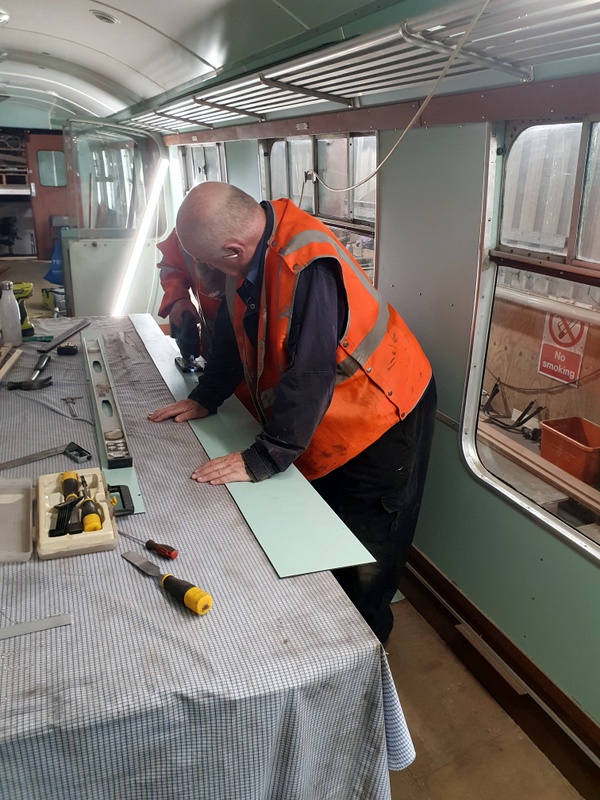
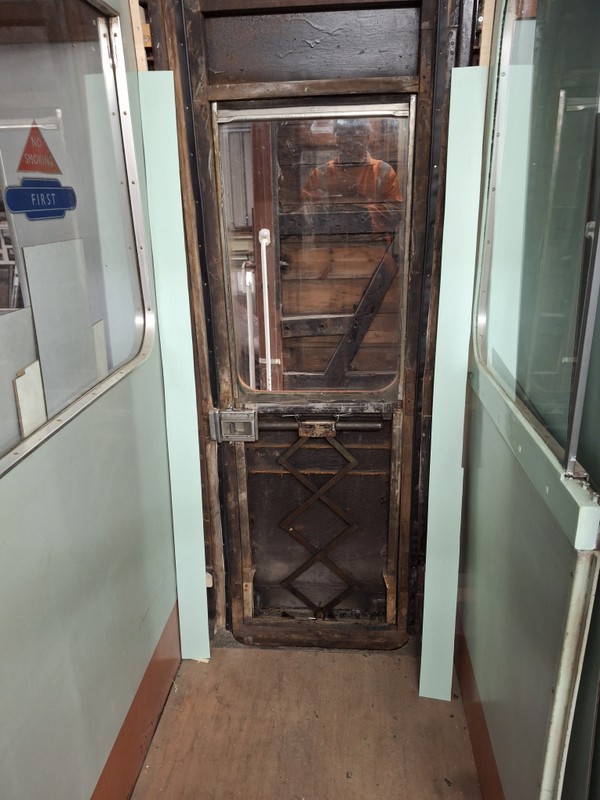
The following picture shows beading being prepared as a "homework" project...
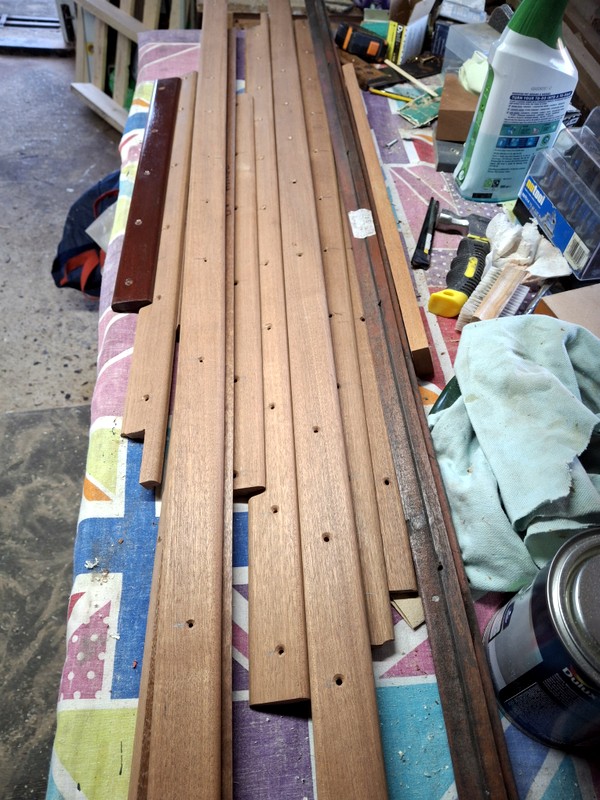
A 'doors' kit of parts...
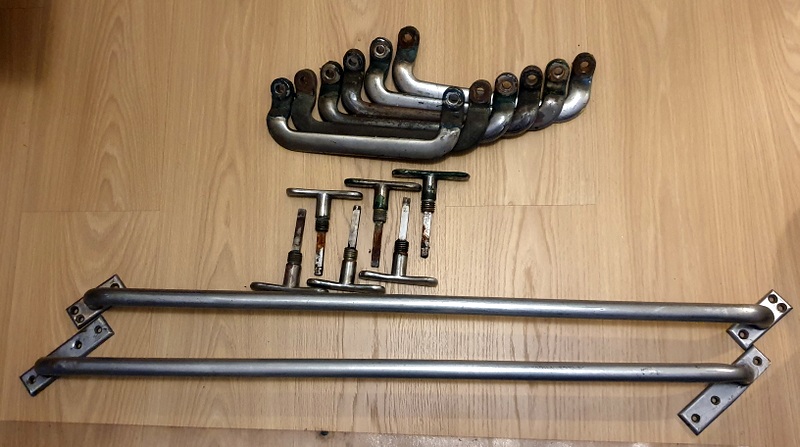
An electro-pneumatic (EP) valve was replaced because it was not seating correctly, and losing air whilst standing. The replacement is clearly better as it has had a dose of "paintenance"...
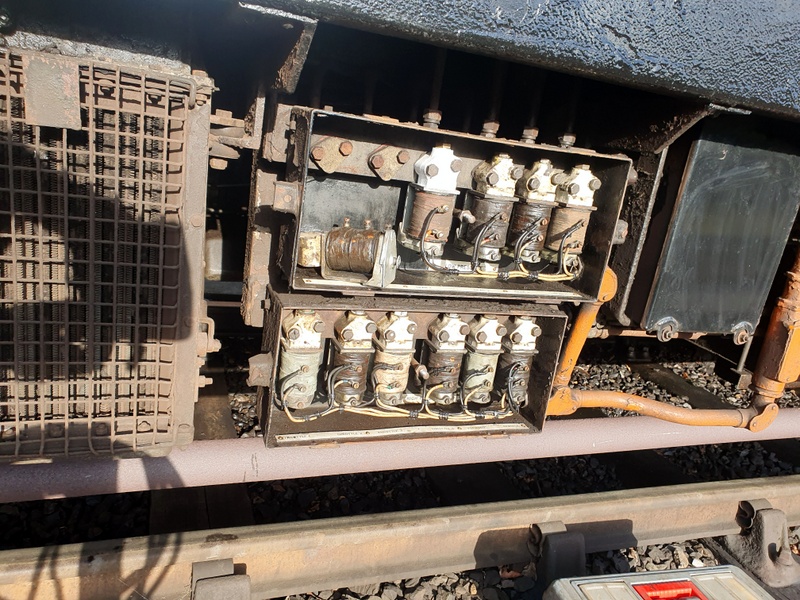
Wickham Class 109 50416/56171>
A repair was made to a sliding window that didn't want to slide properly...
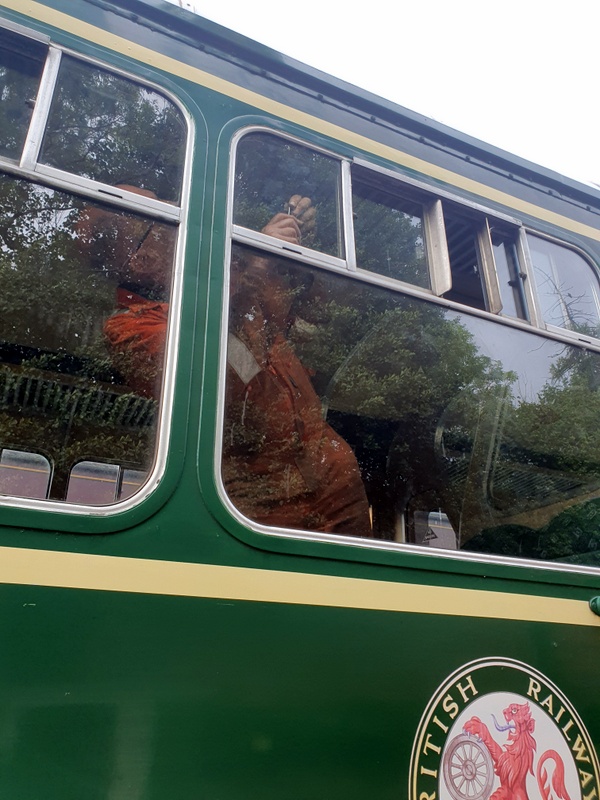
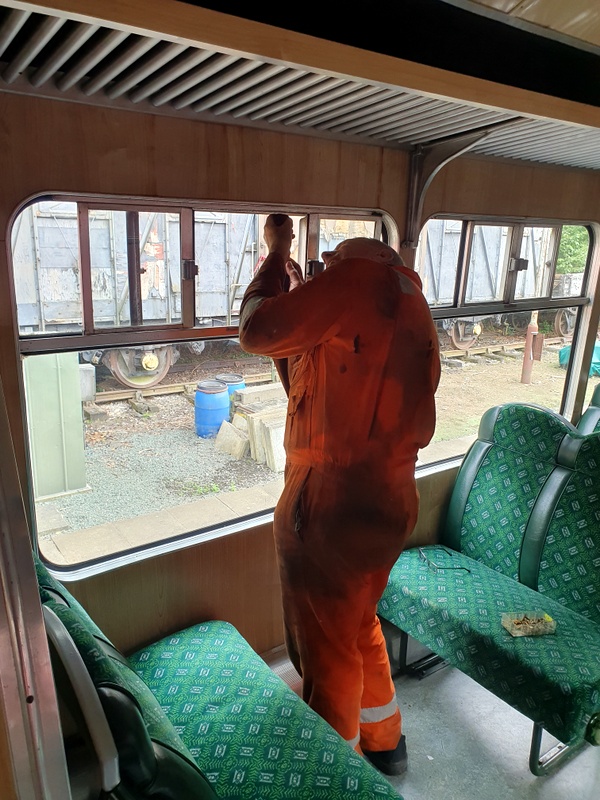
Hybrid Class 127/108 51618/56223
Adjustments were made to a throttle motor on the class 127 power car, as one engine was doing more work than the other. This box of 'gubbins' controls the engine power. The air cylinders at the bottom are operated by the driver's controls. The pistons lift arms that turn a shaft, and another linkage from that operates the engine's fuel pump governor.
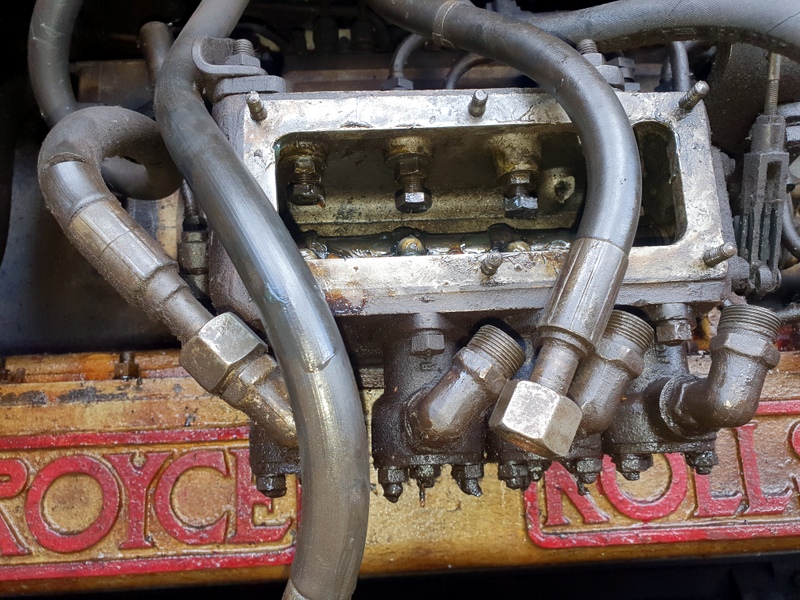
The first window frame for the cab windows was made up - not many words to write but the task took most of a day!
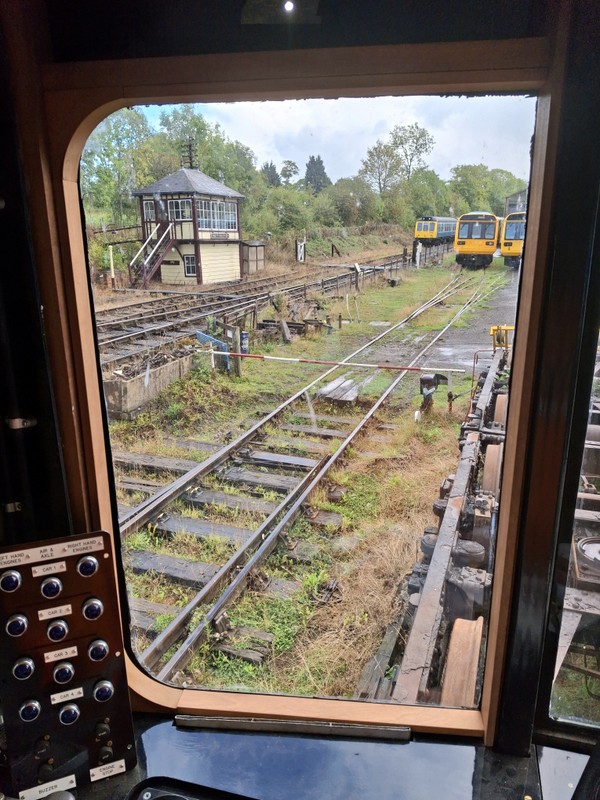
Following the successful fitting, the various components were to be screwed and glued together and then finished with stain and varnish.
Some more wall panels were fitted in the rear compartment on the driver's side...
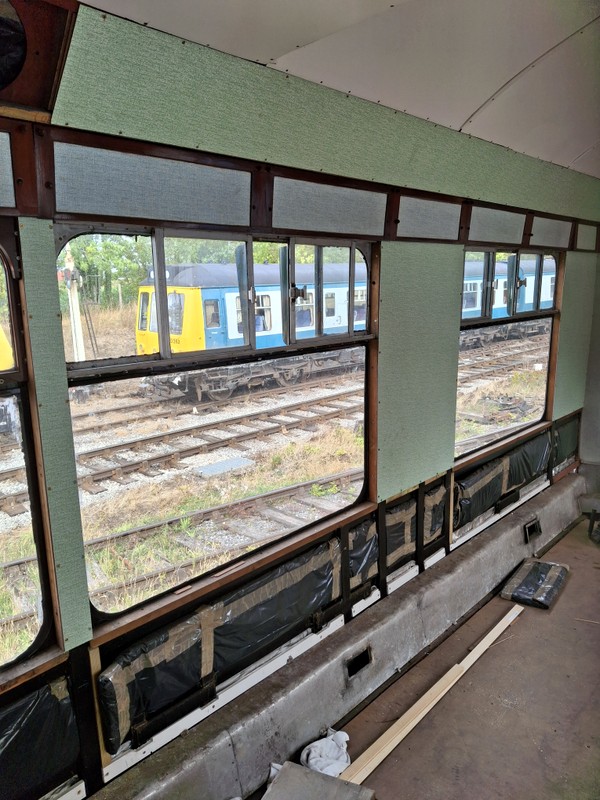
At the rear of the vehicle a new pelmet was made to fit onto the sliding door support frame and the white wood was fettled and fitted to the corner of the toilet wall. Part way up is the recess for a fire extinguisher, which also received some new timber pieces which are flush with the wall panels' thickness...
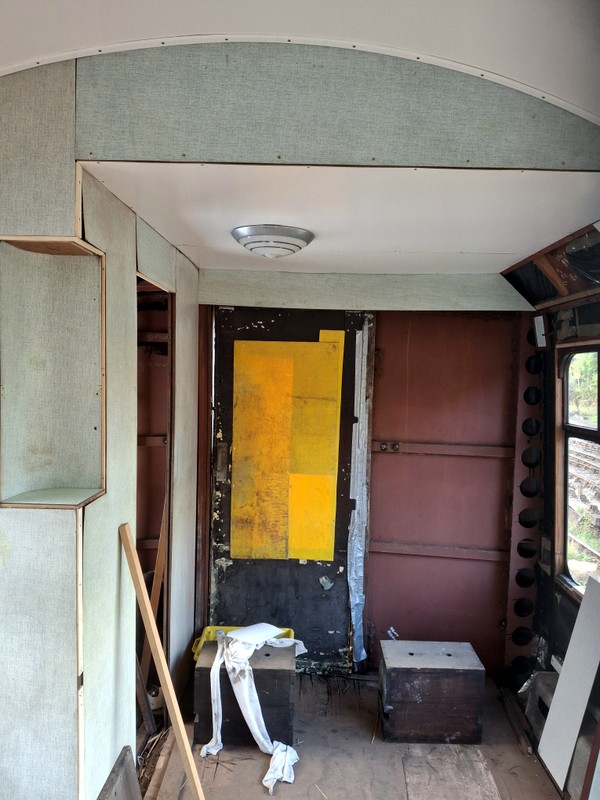
Thanks to Allen Chatwood, John Joyce, Mike Martin, Graham Parkin and Martin Plumb for supplying the pictures that were used in this edition.